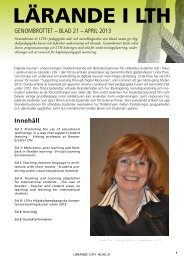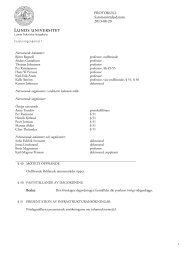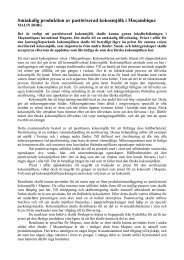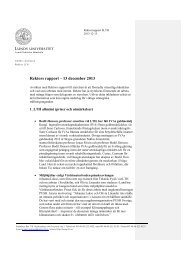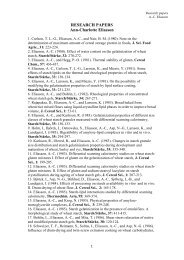User Experience Design at Sony Ericsson - Introducing the Virtual Pet
User Experience Design at Sony Ericsson - Introducing the Virtual Pet
User Experience Design at Sony Ericsson - Introducing the Virtual Pet
You also want an ePaper? Increase the reach of your titles
YUMPU automatically turns print PDFs into web optimized ePapers that Google loves.
To identify opportunities, ethnography is combined with business objectives and goals to see where users current<br />
needs and wants are under-supported and how <strong>the</strong> company can solve <strong>the</strong>se problems. When a specific<br />
opportunity is identified, <strong>the</strong> company’s core competencies are considered so th<strong>at</strong> <strong>the</strong>se are used as effectively as<br />
possible when inventing solutions to <strong>the</strong> opportunity. Embodiment brings toge<strong>the</strong>r <strong>the</strong> two final threads of <strong>the</strong><br />
POSE model; a particular solution and <strong>the</strong> m<strong>at</strong>erials needed to make <strong>the</strong> idea manifest in <strong>the</strong> real world. Wh<strong>at</strong> is<br />
traditionally seen as <strong>the</strong> design problem should have been addressed in <strong>the</strong> invent solutions step. Successfully<br />
done, <strong>the</strong> results of <strong>the</strong> cre<strong>at</strong>e embodiment step should be measured by how well a form embodies a solution, and<br />
by how well th<strong>at</strong> solution, in turn, addresses an opportunity and a problem.<br />
Comments<br />
<strong>User</strong> <strong>Experience</strong> Based design – including <strong>the</strong> POSE model - is a promising framework th<strong>at</strong> helps designers focus<br />
on users’ problems r<strong>at</strong>her than technology. Unfortun<strong>at</strong>ely, <strong>the</strong> framework - as presented here - is not as pragm<strong>at</strong>ic<br />
as designers could hope. Cain has left out more detailed methods for how to proceed in <strong>the</strong> different stages. For<br />
example, “invent solutions” is not an instruction specific enough, and his paper does not give explicit instructions<br />
on how to progress when performing ethnography studies. Never<strong>the</strong>less, if <strong>the</strong>se methods are developed, <strong>the</strong><br />
EBD could help companies organize <strong>the</strong>ir design so th<strong>at</strong> solutions, to a degree as high as possible, are based on<br />
users’ actual problems, needs and wants.<br />
21




